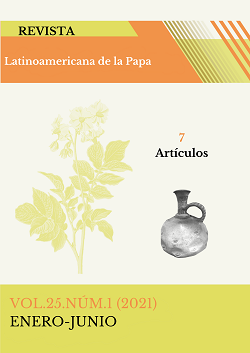The limits of potato crop productivity in Ecuador between 2017 and 2018
##plugins.themes.bootstrap3.article.main##
Abstract
The homogenization of agricultural cultivation practices in the world for the purpose of increasing productivity brings with it multiple consequences, among which are: soil erosion, practices and varieties. Potato was one of the first crops on which technologies related to the Green Revolution were applied, which brought increases in yields, however, its effect wore off over time, and in many cases causes decreasing yields, as is the case of potato in Ecuador. In this sense, the present study aims to evaluate the performance of inputs (fertilizers, phytosanitary control, seeds) immersed in potato production and the characteristics (irrigation availability, location, labor) of the Agricultural Production Units through the estimation of a multiple regression model with information from the Continuous Agricultural Surface and Production Survey of 2017 and 2018. The results show that the overuse of chemical fertilizers and phytosanitary control causes decreasing crop yields; likewise, the need for public irrigation systems to increase productivity is highlighted. At the same time, the results confirm the loss of productivity between 2017 and 2018 by about 25%, and the existence of territorial gaps in production, in which the province of Carchi has higher yields.
Additional Keywords: Green Revolution, diminishing returns, multiple regression.
Download Statistics
##plugins.themes.bootstrap3.article.details##

This work is licensed under a Creative Commons Attribution-NonCommercial-ShareAlike 4.0 International License.


 https:/orcid.org/0000-0001-9594-2460
https:/orcid.org/0000-0001-9594-2460